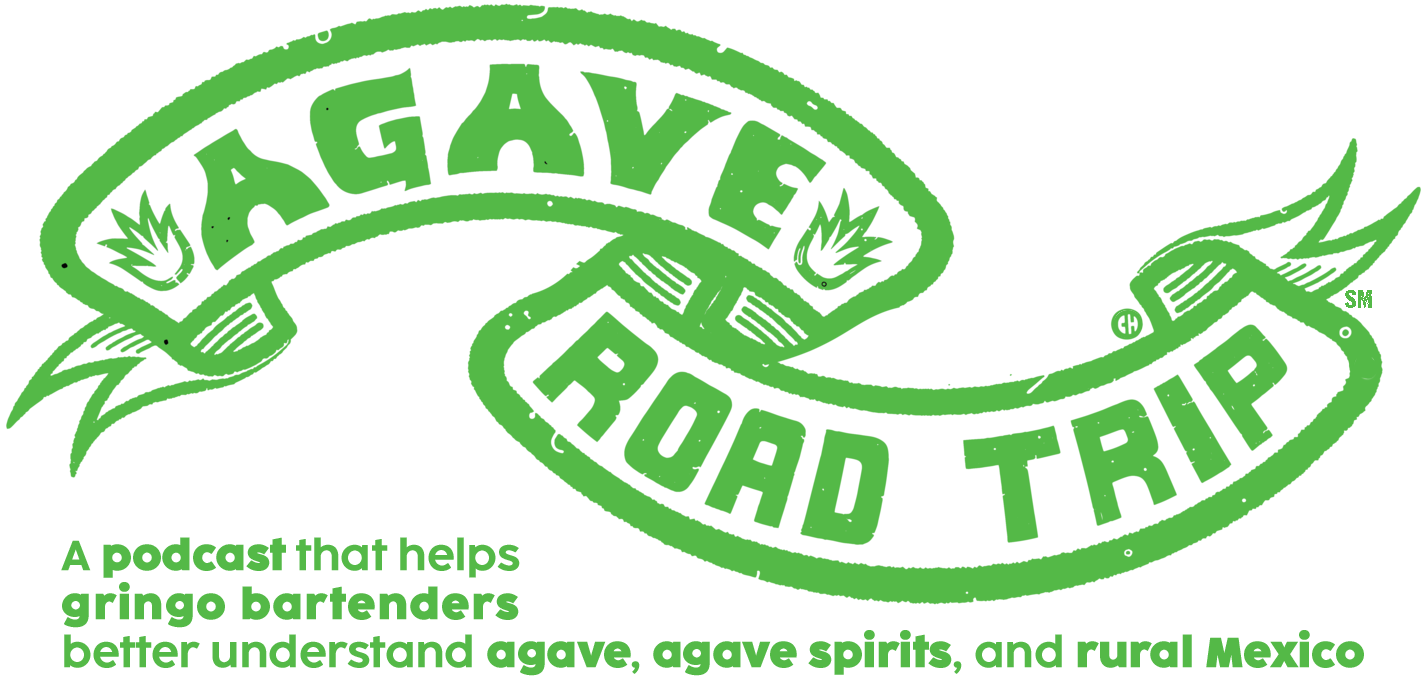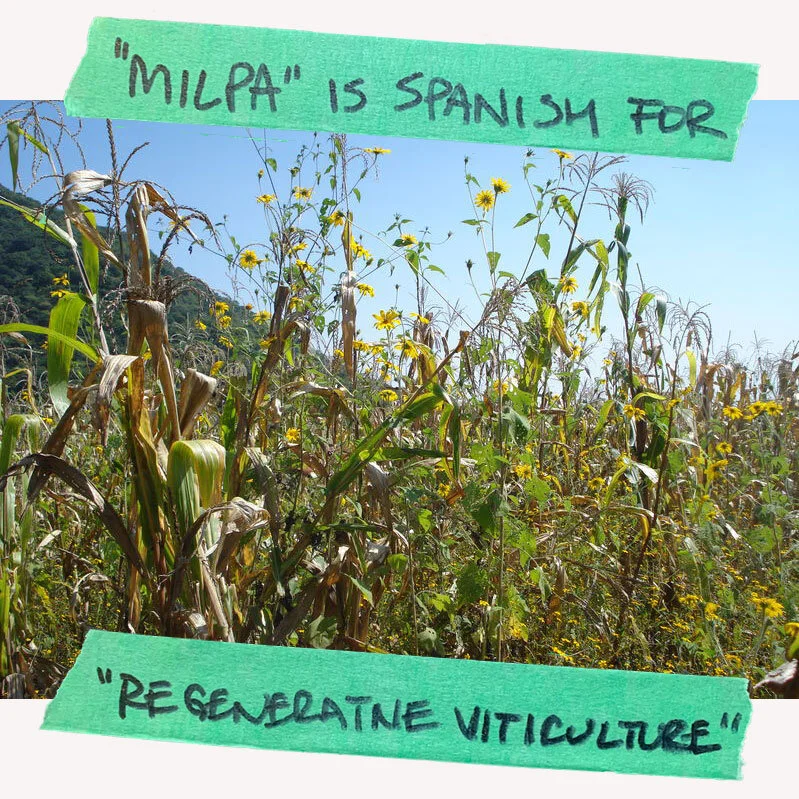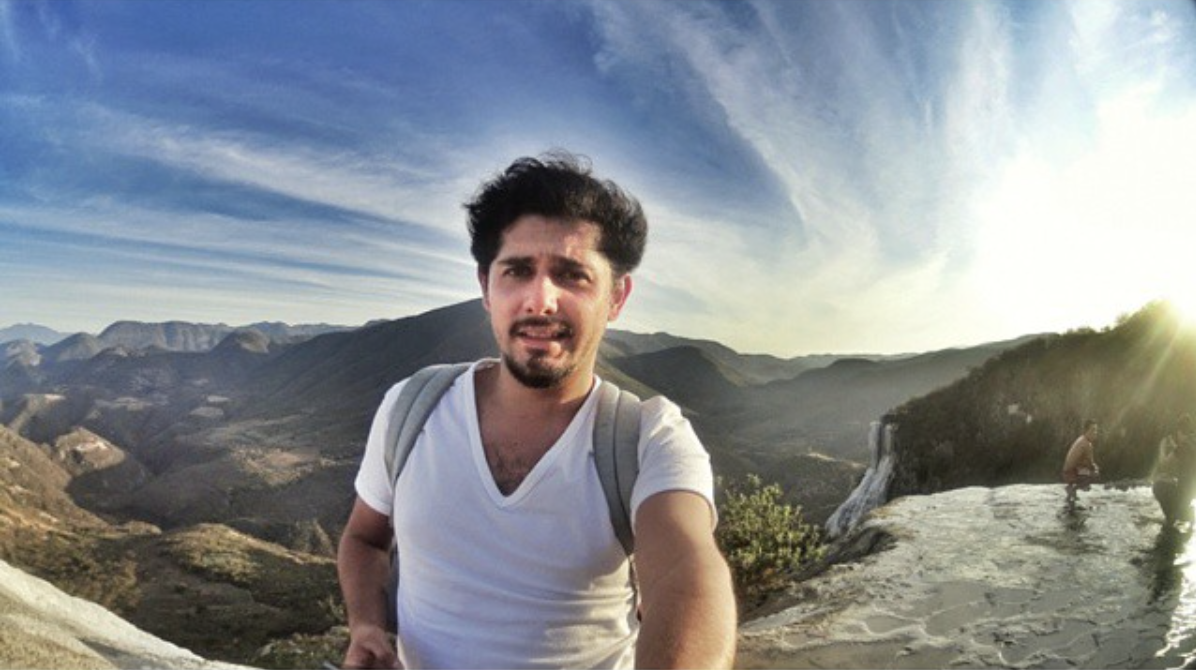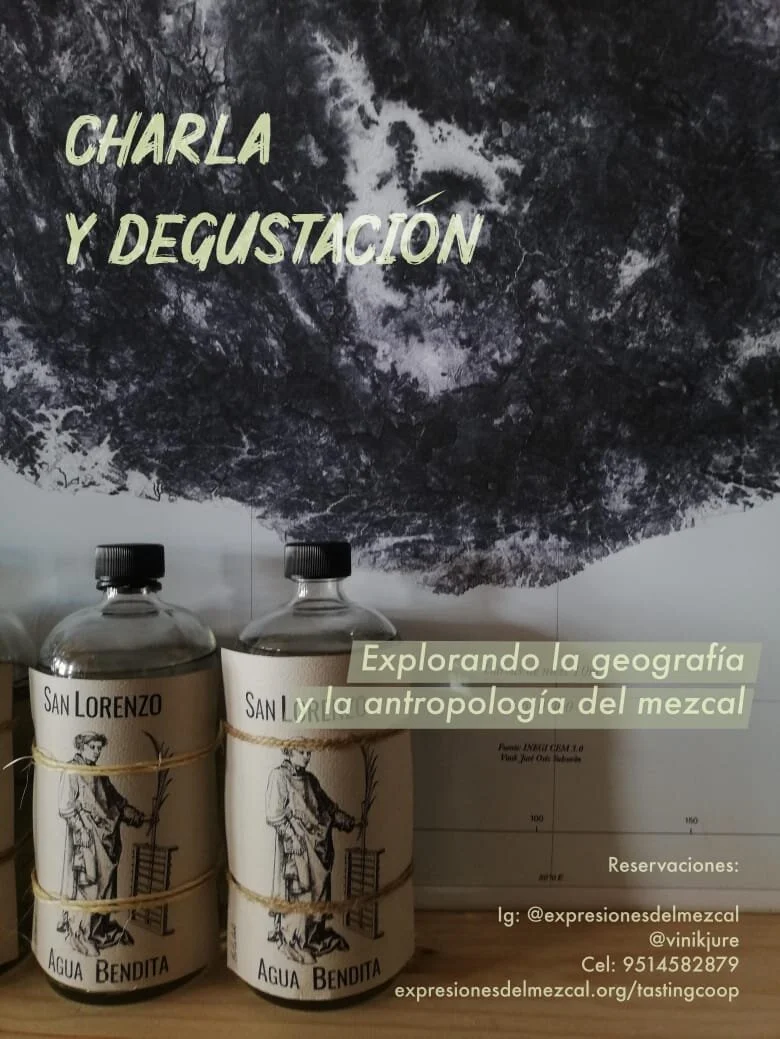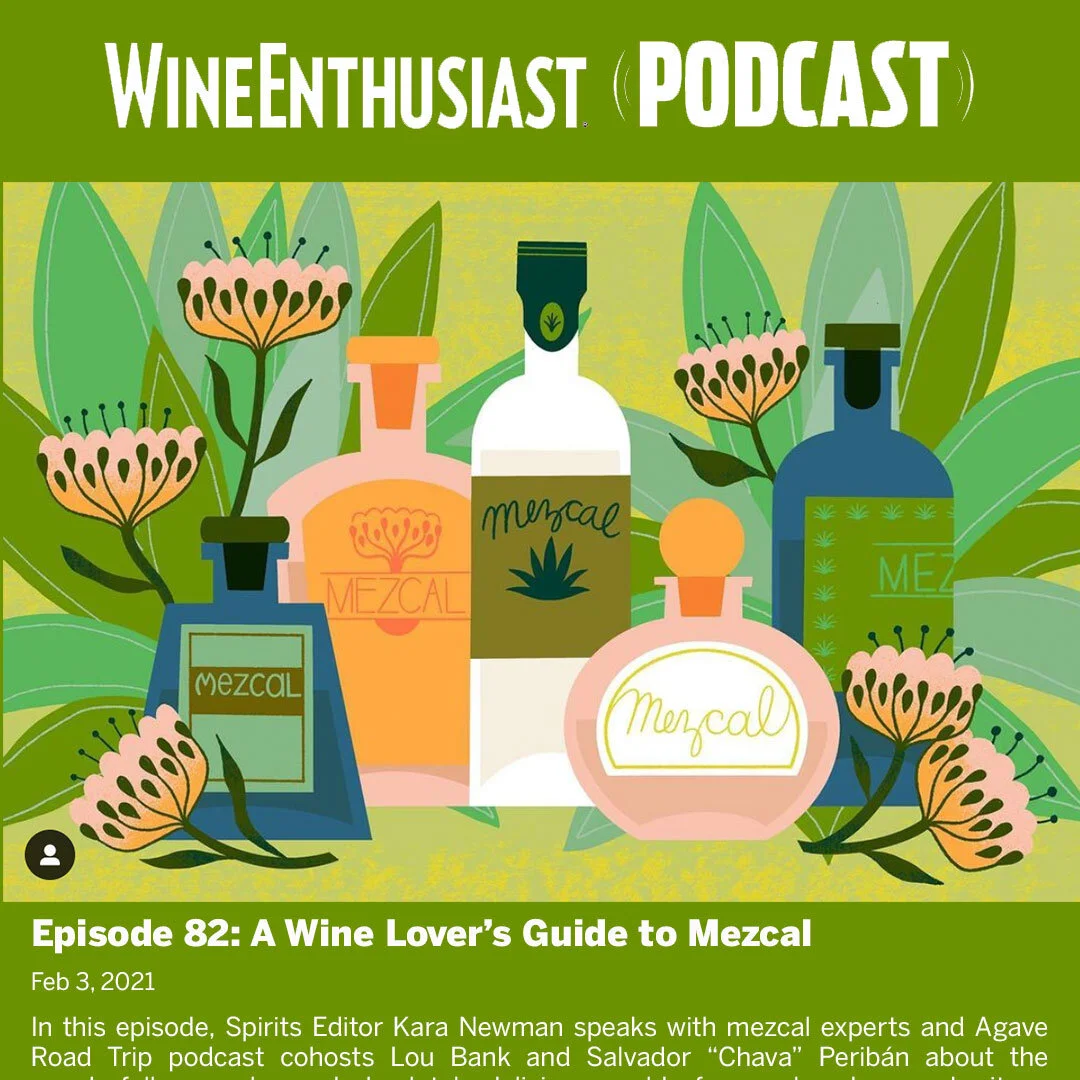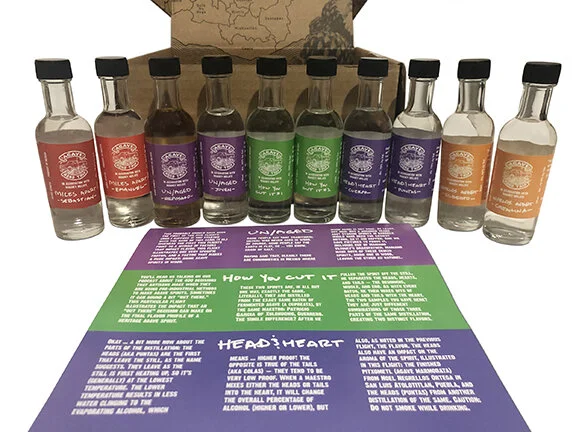“Milpa” is Spanish for “Regenerative Viticulture”
If you dip your toe into the world of wine, some buzz phrases you’ll see are “regenerative viticulture” and “regenerative agriculture.” But, really, when you get right down to it, isn’t that really just milpa? Join us for a conversation about farming practices in Mexico, and about how those farming practices impact agave spirits, in this episode of Agave Road Trip!
This episode of Agave Road Trip is brought to you by MezcalForLife.com. What you drink out of is just as important as what you drink. MezcalForLife.com can help you find the perfect drinking vessel for your perfect agave spirit. Head to MezcalForLife.com now and you can be set for next week’s episode of Agave Road Trip, sponsored by MezcalForLife.com!
Agave Road Trip is a podcast that helps gringo bartenders better understand agave, agave spirits, and rural Mexico. It’s hosted by Lou Bank and Chava Periban.
One of the many articles about regenerative agriculture and wine, from our friends at Wine Enthusiast.
Our friend Vinik Jure Oses Sulvaran
Vinik can accommodate you for both tastings and tours!
Chava and I were interviewed by Kara Newman, the Spirits Editor for Wine Enthusiast. It’s why we recorded this episode of our podcast, so that anyone hearing us on Wine Enthusiast who migrated over would have an episode that’s related to wine. Go and listen to the Wine Enthusiast podcast, which also includes a quote from Eduardo Angeles of Lalocura. (And the art to the left is by Ellen Surrey — thanks, Ellen!)
In that Wine Enthusiast podcast interview, Chava talks about our Agave Road Trip-in-a-Box tasting kit, produced in partnership with Maguey Melate. Check it out!
Episode transcript
Lou Bank (00:02):
I am Lou Bank.
Chava Periban (00:02):
I am Chava Periban.
Lou Bank (00:05):
And this is Agave Road Trip, The podcast that helps gringo bartenders better understand agave, agave spirits and rural Mexico. And today, Chava, I want to talk about rural Mexico.
Chava Periban (00:18):
Oh, it's specific to rural Mexico? Nothing that looks like a city?
Lou Bank (00:23):
Yes, nothing that looks like a city. So this is this episode of agave road trip is appearing the same week as I believe our episode of "Wine Enthusiast" — we were interviewed by the Wine Enthusiast podcast.
Chava Periban (00:38):
We felt really important. Yeah.
Lou Bank (00:41):
Yeah. And there's a phrase that I've been seeing popping up on all of these wine forums, a phrase that brings to mind something about rural Mexico that I think is sort of the other side of the coin, if you will. So the phrase, the phrase I'm talking about here is "regenerative viticulture."
Chava Periban (01:01):
Oh yeah. I've seen that all over the web. It's rather common and trendy these days, along with natural wines, volcanic wines and minerality.
Lou Bank (01:13):
So yeah, I've been seeing it a lot. And when I see that phrase, you know, — and, and this is way more your area than it is mine, Java. But when I see "regenerative viticulture," what it says to me is we really screwed up the land, and so we're going to plant a bunch of grapes in the right way. And I'm not entirely sure what the right way is, but we're going to plant grapes in the right way, such that we will help to heal the earth that we have harmed.
Chava Periban (01:43):
Yes. Or if it's an untouched area of land that somehow has saved itself, we're going to make it in such a way that it's going to be in better shape than what it is right now.
Lou Bank (01:54):
Right. Right. So, you know, this all puts me in mind of the milpa.
Chava Periban (02:00):
milpa. Yeah. Which honestly, I'm pretty sure it's a little bit older than this concept that you're talking about.
Lou Bank (02:08):
Right, right. So, okay. So what exactly is milpa? Why don't we pull a quote from our friend Vinik Jure?
Chava Periban (02:14):
Right. Let's pull a quote from Vinik about what milpa is.
Vinik Jure (02:19):
INSERT VINIK QUOTE.
Lou Bank (02:19):
Okay. Okay. So thank you, Vinik. And if you come down to Oaxaca, definitely look up Vinik. He's got a mezcaleria where you can drink some beautiful agave spirits. He's got a little restaurant where you can eat some beautiful food, that's made from stuff grown in a myriad of different communities. And then he also does tours, will take you to those beautiful communities. We'll put a link on the webpage on our website, agaveroadtrip.com, so that you can find him
Chava Periban (03:01):
Some really cool essays on his site, as well. If you can read Spanish, I really, really encourage you to read them, and put it through Google Translate if you can't.
Lou Bank (03:09):
Yeah. So, okay. So that's what milpa is. And it feels to me — and again, this is your area, Chava, not my area, but it feels to me like, in essence, regenerative viticulture is, we screwed things up and now we're going to fix it with grapes. Whereas milpa feels to me like they never stopped growing all these things together in order to create a more sustainable environment — not even a more sustainable environment, they follow this philosophy in order to sustain the environment forever.
Chava Periban (03:41):
Yes. And something that I found so fascinating about what Vinik told us, well, there's two things that I want to point out. The first one is he says, milpas will change depending where you are. Like traditionally people will refer to it as a place where cabbage, beans, squash, and corn are collaborating together — and flowers, sometimes. But again, it changes so much. And he was referring to a specific plant, quelites, which is something that we eat a lot here in Mexico. And just to give you an idea of how diverse milpas can be from each other, even within a single space, in Mexico city, he said, some people studying milpas identified over 3,600 different species of quelites.
Lou Bank (04:26):
This little green thing that we don't even know what it is up here.
Chava Periban (04:30):
Exactly. It is delicious, by the way. But, all I'm saying is, milpas are an oasis of diversity. I guess that's the best way to define it or how I'd like to think about it.
Lou Bank (04:40):
Okay. So what does all of this have to do with the beautiful agave spirits that we drink and the beautiful wines that people drink? What does this have to do with?
Chava Periban (04:49):
Well, there's different ways to think about this. I think the most common way I found people explaining this is, to say that these different crops influence the flavor that comes out of the agave, because there was corn beans, there was flowers, all these things will further enrich the flavor profile of the agave and therefore you're going to get something more tasty, more interesting. And I might agree with that. But what I do think is it makes it more resilient — I think it makes agave more resilient to plagues, and it does have a lot of the principles that you find in the notions of regenerative agriculture, which is better carbon sequestration, healthier water systems, it prevents soil erosion, all those good things that, of course we all want. But the other part of this that I had never thought about is how these different things growing together can create a food and flavor landscape that becomes the heritage of community. Does that make sense?
Lou Bank (05:58):
Uh, well sort of, I mean, it's, it sounds a little hocus pocus to me.
Chava Periban (06:01):
Why is that, Lou?
Lou Bank (06:04):
Just 'cause it grows in the same place, is it really going to taste better together? I'm not sure that I believe that.
Chava Periban (06:10):
Well, exactly. But that's, that's the beauty of this. It doesn't have to. What is really interesting is when people start paying attention to different flavors that exist within their communities and they're searching, forming these foods to make each, to compliment each other, in a way. I like to think of it almost as ballet, you know? When you go and watch ballet, it's beautiful because of how synchronized they are, even if they're making different movements, even if they're not all making the same move. All the moves come together to create a beautiful composition and that's by design — that didn't just happen. So I think that that's what happens in these communities. And therefore, I think that's why we have so many different ways in which mezcal tastes. I mean, you're the first one that will say that from one community to the other, you have such crazy differences in flavors. Somebody could tell you that it was made in Kazakhstan, and you will believe them because it's so different to what you tasted 20 miles away, 10 miles. How can that happen?
Lou Bank (07:23):
Yeah. You know, that's interesting. So explain this to me, then — here's a curve ball for you. Why is it that the last thing in the world I want to eat when I'm drinking beautiful agave spirits are chilies?
Chava Periban (07:38):
Because you're broken, Lou.
Lou Bank (07:42):
There's something about a chili pepper to me that actually ... even if I like the taste of the chili pepper and I like the taste of the agave spirit, I don't tend to like them together.
Chava Periban (07:53):
You're broken, Lou. I'm very sorry. You had to be born there so you actually do like both together. I love a slightly warm agave spirit and then something spicy and just the nuclear reaction to that creates on my mouth. Yeah. It's lovely.
Lou Bank (08:08):
Well, okay. So maybe this is a different ... God, you know, part of what Vinik was talking about was the culture of the community, right? And maybe this really does speak to the fact that I am a gringo. Right? That I'm not part of that community. So that milpa puzzle is foreign to my palate.
Chava Periban (08:26):
Well, I'd like to think of this as, when I see gringos trying to dance in the middle of a party in Mexico, you guys ... your body ... I mean, there's some wonderful exceptions, but most of you, you have not had a lot of chance to train your body to dance. Therefore, more often than not, you guys look rather ridiculous. You don't belong in that dance. With all the love that I have for you guys.
Lou Bank (08:53):
I love that when you're talking about this, it's "you guys," you don't want to actually point me out individually.
Chava Periban (08:59):
no, no, no, no, no. I don't want to single you out.
New Speaker (09:02):
But the other thing that this also says to me, when we're talking about this food landscape, is maybe it all goes together because it's meant to stay together in this place. Right? Like maybe, maybe part of the problem ... one of the reasons that we need regenerative viticulture in order to regenerate the environment is because we've been moving stuff too far away from where it is grown and there's damage done to the environment in moving it. Well, that's one piece of damage, but the other damage is when somebody like me — and I, you know, I hate to say this because I love visiting Mexico. But when I jump on an airplane and I fly down to Mexico, am I damaging the very thing that I love, that I'm going there to see?
Chava Periban (09:47):
I think there's various ways to think about this. And the first one is you, yourself, you are not damaging the space because that's one of the big benefits of having such a diverse system. The milpa is very resilient to foreign entities like yourself.
Lou Bank (10:05):
It's built up an immunity to Lou Bank.
Chava Periban (10:08):
Yes. Uh, but the other part is, yes, you are not wrong about this. We, the human species, has made a lot of things that strain rural areas and part of that is, yes, it's the contamination that we have in the water, but it's also, every time we get in an airplane, every time we put 50 tons of avocados to travel to the Super Bowl, we've done a lot of that damage. So I, unfortunately, I'm not 80 years old to have a better solution or a better way to say, how can we fix this? I just think milpa can be the tip of the iceberg. It's something you do to solve that problem. How I grow the things now, what do I do with the things I grow, that's a whole different story that we need to think further?
Lou Bank (11:01):
If we bring the things from other communities to our community to consume ... if we make that the spice, as opposed to the meat, or if those things are the side dish, as opposed to the meal ... you get that concept?
Chava Periban (11:18):
Like just a tiny little bit comes from outside and the main meal come locally.
Lou Bank (11:22):
Yeah. Comes somewhat local.
Chava Periban (11:30):
I think that's one of the reasons why a lot of gringos, when they visit Mexico, they're so surprised about the flavors that they find here. A lot of you guys are eating very simple food, very, very simple food, but it tastes like something very different. If you have a cabbage, and it tastes like a cabbage, you are not so used to that. And I think that's one of the big benefits of not moving things very far away from where they are grown.
Lou Bank (11:54):
Beautiful. Okay. Well, yeah. I think with that, Chava — on that happy note— we're gonna wrap this episode and I'll catch you next time.
New Speaker (12:05):
I cheer you with my glass of wine, Lou.
Lou Bank (12:12):
Hasta pronto.
